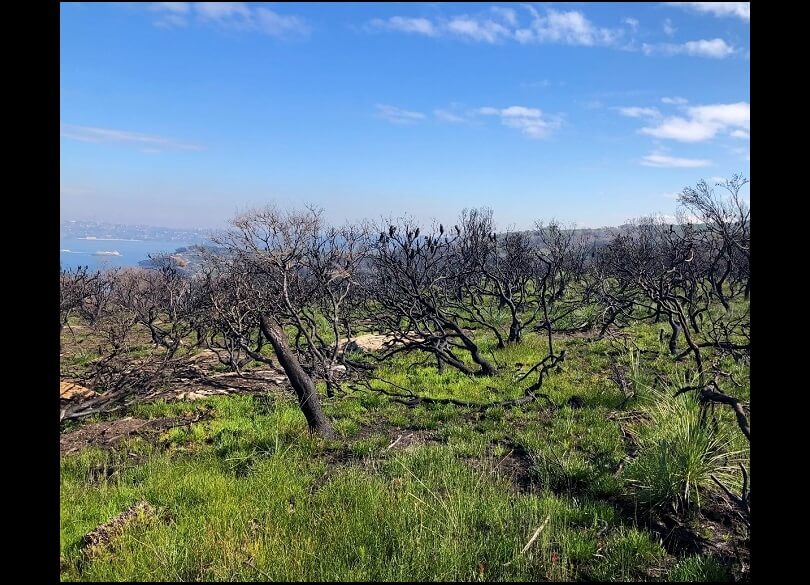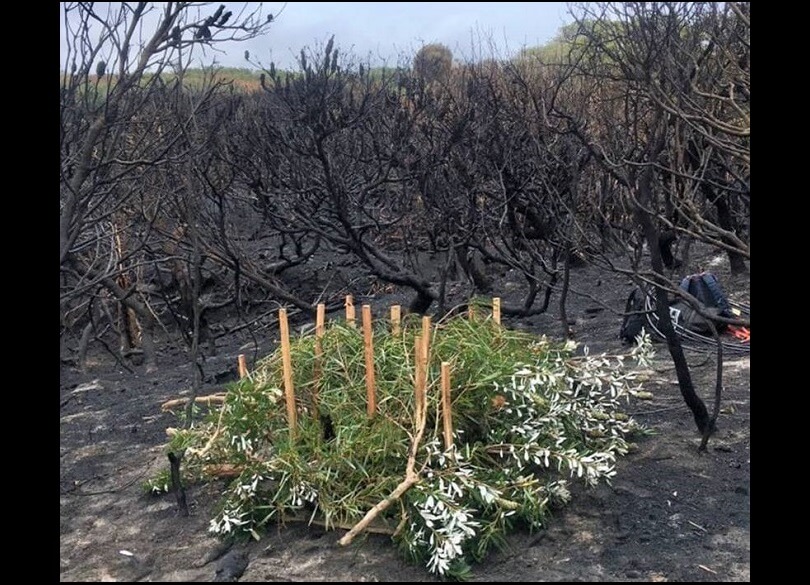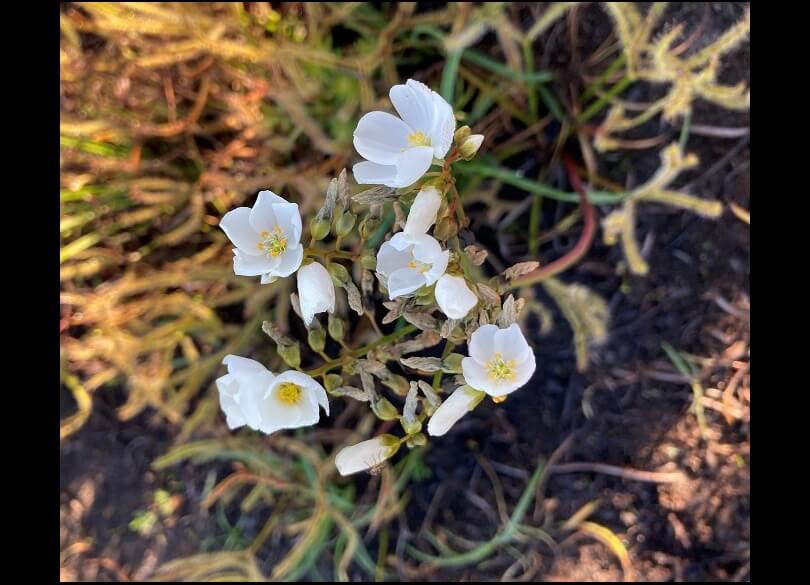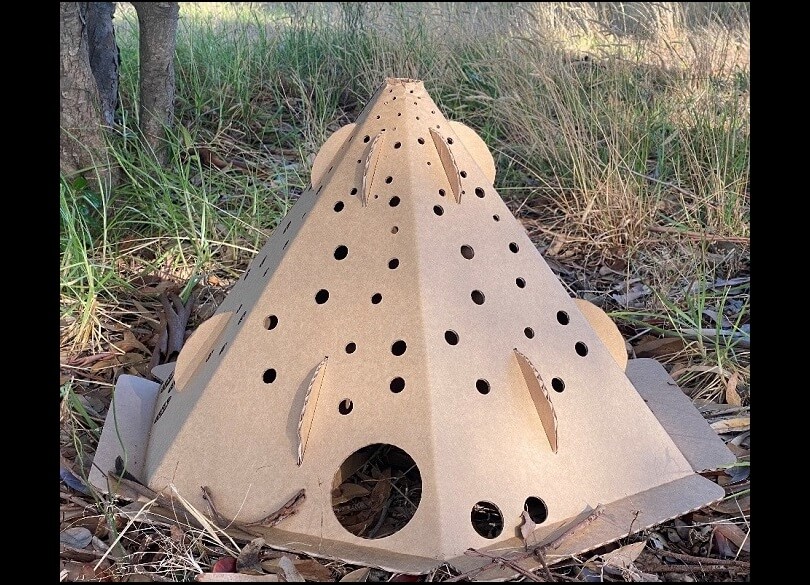On 17 October 2020 a planned hazard reduction burn at North Head spotted over containment lines. This was driven by stronger winds than forecast, which also arrived earlier than advice predicted. The result was an additional 54 hectares being burnt than was planned. Half of the additional area was part of the next planned burn that is part of a long-term plan to manage fire at North Head.
To address the risks associated with undertaking hazard reduction burning, frontline agencies undertook detailed planning and extensive risk assessments, including an assessment of weather conditions, prior to the burn proceeding.
As part of the contingency plan for hazard reduction burns, there were approximately 100 firefighters on hand to manage this burn, with support from 3 helicopters for aerial observation and with water bucketing capability. This meant that frontline agencies were able to bring the fire under control overnight.
Impacts of the burn
The initial advice from experts is that the ecosystems in the burn area should not be significantly affected in the long term. However, the fire did cause several safety and accessibility issues.
The ecosystems at North Head have adapted to fire over thousands of years and fire is essential for the vegetation communities to remain healthy. The preliminary assessment is that the burn should not have any significant long-term impact on the ecology of North Head; rather, the overall area will benefit from the burn. Prolonged periods without fire or multiple cool burns lead to a:
- simplified structure
- loss of plant diversity
- loss of food sources for animals
- loss of habitat resources for animals.
Experts who have been out on site have provided advice that vegetation communities that depend on fire for regeneration and new growth will respond very well, even under areas of relatively high fire intensity.
Although the impacts of the fire were initially thought to be severe, assessment of the fireground has revealed that fire intensity was within prescription for these vegetation communities. Field inspections show vegetation is naturally regenerating well in the burnt area, demonstrating the importance of fire to the flora species and communities on the headland.
Despite a larger area than anticipated having been burnt, there is still a mosaic of burn intensity across the landscape, and previous burns undertaken in other areas of Sydney with similar vegetation have responded well to being burnt.
Two Threatened Ecological Communities occur within the fire affected area: 29% of Eastern Suburbs Banksia Scrub (ESBS) and 69% of Sydney Freshwater Wetlands on the headland were burnt at variable intensity.
Regular field observations and monitoring of the vegetation will continue throughout the bushland’s recovery.
The fire damaged the fence around the North Head Scenic Precinct (including Fairfax walking track and Fairfax lookout), so these areas were closed temporarily. Fairfax walking track has now been reopened with temporary barriers in place, while plans to replace the permanent fence are underway. This temporary closure also allows the vegetation to regenerate.
The fire event also created several hazards that are being addressed. These include:
- debris and hazardous materials including asbestos – walking tracks, roads and bushland have been assessed and cleared of hazardous materials; however, some hazardous materials may still remain in the bushland
- cliff edge access – the fire removed the dense barrier of bushland dividing the headland cliff edges from the Fairfax walking track and lookout. Sandstone cliffs are inherently unstable and community members should stay behind barriers and on formal walking track paths
- hazardous trees – all hazardous trees have been removed from walking tracks and roads.
Bushfire Recovery Program
The National Parks and Wildlife Service (NPWS) is working with partners and experts, including Sydney Harbour Federation Trust (Harbour Trust), Australian Wildlife Conservancy (AWC), Taronga Zoo, Sydney University, Australian Registry for Wildlife Health and Northern Beaches Council to implement the fire recovery program. The program commenced immediately after the fire and is progressing successfully. The program’s initial focus was on providing artificial habitat, monitoring of fauna populations and increasing the level of weed control and pest animal control as the vegetation returns.
The program includes a range of projects spanning the different areas of ecological recovery and involving several different agencies. Some of the recovery management actions that these projects address include:
- infrastructure, safety and accessibility
- flora and fauna management
- weed and pest control
- cultural and historic heritage
- hazard mitigation
- coordination and planning
- communication.
While the Fairfax walking track and carparks near the North Fort Café have been reopened and are again accessible, the lookouts will remain closed while safety works continue.
After the hazard reduction burn, NPWS engaged geotechnical engineers to assess the cliff edge and its stability along the Fairfax walk. This assessment concluded that the lookout presents an unacceptable risk to visitors and must remain closed. In 2016, a rockfall occurred approximately 300 metres west of the existing lookout, so it is essential this is carefully managed.
The investigation and assessment have now been completed and NPWS will be engaging a consultant to design new lookouts in a geologically stable area. The new lookouts will be designed with particular attention to the existing topography, vegetation, natural character of the landscape, materiality and accessibility.
The lookouts will remain closed while this work is underway. Please do not enter the closed areas during this time.
The Quarantine Station, Collins Beach, and Bluefish to Shelly Beach walking tracks also remain open.
For the latest information on closed Sydney Harbour National Park areas, visit the NPWS website.
For information on current track closures on Harbour Trust land, visit the Harbour Trust website.
Animals
A range of healthy wildlife, including echidnas, ringtails and a variety of reptiles, have been seen foraging in the fire-affected areas, indicating food supplies are available. Long-nosed bandicoots have also been spotted in both burnt and unburnt areas and many female bandicoots have pouch young.
NPWS has been working closely with AWC at North Head and Taronga Zoo to provide bandicoots and other small mammals with supplementary food, and will continue to provide water points and install refuge shelters such as nest boxes, ‘bandicoot bungalows’, refuge tunnels and ‘habitat pods’. With assistance from AWC, around 200 ‘habitat pod’ refuge shelters will be installed across different national parks, including at North Head.
Broad-scale habitat monitoring work will continue to be carried out to monitor native plant and weed regrowth and germination, and pest animal incursions.
In May 2021, NPWS undertook a headland-wide survey to monitor the long-nosed bandicoot population. There were approximately 325 captures of long-nosed bandicoots in total, and new bandicoots were microchipped for monitoring. This number of captures compares favourably to surveys from previous years. Data analysis from this survey will provide an estimate of the long-nosed bandicoot’s total population size at North Head and help inform any additional management practices needed to assist with wildlife recovery.
Members of the community can assist animal conservation by keeping cats inside and not bringing dogs into Sydney Harbour National Park. Predation by pets is a threat to wildlife and is a key issue for the endangered populations at North Head. NPWS encourages responsible pet ownership from both visitors in the Sydney Harbour National Park and residents of neighbouring areas.
Plants
It can take 12 to 18 months for most plant species to regenerate following a fire. The vegetation on North Head has evolved with fire and it is expected to regenerate well. While this process takes place, the main threats to plant regeneration are:
- seedlings being trampled
- weed invasion
- rabbits.
The Sydney North team at NPWS will be controlling rabbit numbers and weeds throughout the year to help provide the best possible environment as the bush returns.
Members of the community can help the bush regenerate by staying out of closed areas of North Head and staying on walking tracks.
Bushfire Recovery Advisory Group
A North Head Bushfire Recovery Advisory Group was established following the fire. The purpose of the group is to support and coordinate fire recovery efforts.
NPWS co-chairs the group with Harbour Trust, and is joined by community representatives, local elected representatives, government agencies, local government, experts and consultants.
At the first meeting on 15 December 2020, NPWS staff shared information about the fire and gave presentations on the fire management planning process and the NPWS North Head Recovery Plan.
NPWS is launching an exciting citizen science project where the community can help track post-fire bushland recovery. Two photo points will soon be installed where anyone can take photos of the regenerating bushland and share them to an online collection. By uploading photos, you will be assisting NPWS to monitor vegetation growth over time and study how the landscape is evolving.
Volunteer bush regeneration groups are currently working in fire-affected areas of North Head. To register your interest in being a bush regeneration volunteer at North Head, please sign up at the Volunteer Information Portal.
The Australian Wildlife Conservancy has been actively involved with NPWS during their efforts to provide aid for animals following the fire. Visit the Australian Wildlife Conservancy website for more information about their work.
The fire recovery is being managed by the NPWS Sydney North team. If you would like to sign up to receive updates specifically regarding the fire recovery, please email [email protected].




